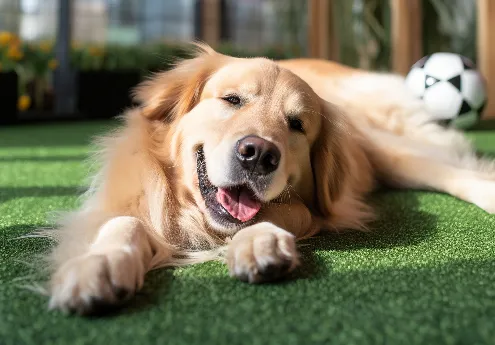
- Afrikaans
- Arabic
- Belarusian
- Bengali
- Czech
- Danish
- Dutch
- English
- Esperanto
- Estonian
- Finnish
- French
- German
- Greek
- Hindi
- Hungarian
- Icelandic
- Indonesian
- irish
- Italian
- Japanese
- kazakh
- Rwandese
- Korean
- Kyrgyz
- Lao
- Latin
- Latvian
- Malay
- Mongolian
- Myanmar
- Norwegian
- Persian
- Polish
- Portuguese
- Romanian
- Russian
- Serbian
- Spanish
- Swedish
- Tagalog
- Tajik
- Thai
- Turkish
- Turkmen
- Ukrainian
- Urdu
- Uighur
- Uzbek
- Vietnamese
plastic lawn grass
Dec . 13, 2024 03:31 Back to list
The Rise of Plastic Lawn Grass An Eco-Friendly Alternative
In recent years, the conversation around sustainable landscaping practices has intensified, leading to innovative solutions in outdoor design. One such solution that is gaining popularity is plastic lawn grass, also known as artificial turf. While it has been around for decades, advancements in technology and a growing awareness of environmental challenges have propelled it into the spotlight as a viable alternative to traditional grass. This article explores the benefits, challenges, and emerging trends associated with plastic lawn grass.
The Appeal of Plastic Lawn Grass
One of the most significant advantages of plastic lawn grass is its low maintenance requirements. Unlike natural grass, which demands regular mowing, watering, fertilizing, and pest management, artificial turf offers a hassle-free alternative. Homeowners can say goodbye to the weekly ritual of yard work, allowing them more time to enjoy their outdoor space. This maintenance advantage not only saves time but also reduces the carbon footprint typically associated with gas-powered lawn equipment.
In addition to reduced maintenance, plastic lawn grass promotes water conservation. In regions plagued by drought and water restrictions, artificial grass presents a practical solution. Statistics indicate that an average lawn can consume over 60 gallons of water per square foot each summer. By replacing natural grass with synthetic turf, households can significantly reduce their water usage, supporting broader conservation efforts.
Plastic lawn grass is also known for its durability and longevity. High-quality artificial turf can withstand heavy foot traffic and resist fading from UV exposure. Many products come with warranties ranging from 8 to 15 years, providing homeowners with a long-term solution that can endure the elements without deteriorating aesthetics.
Environmental Considerations
While the advantages of plastic lawn grass are appealing, it is essential to consider the environmental implications of its use. Traditional turf production involves vast amounts of chemicals, fertilizer, and water, contributing to soil degradation and pollution. Conversely, artificial grass does not require these inputs, thereby potentially reducing environmental harm.
plastic lawn grass

However, plastic lawn grass is made from petroleum-based products, which raises questions about its ecological footprint. The production process for synthetic turf can emit greenhouse gases, and the end-of-life disposal of used turf is another concern. Many artificial turf products are non-biodegradable, leading to accumulation in landfills. Fortunately, a growing number of companies are developing recyclable options, encouraging responsible disposal solutions that mitigate these environmental concerns.
The Aesthetic Factor
Aesthetics play a crucial role in the appeal of plastic lawn grass. With improvements in manufacturing technology, modern artificial turf can closely mimic the look and feel of natural grass. Available in various shades of green, blade lengths, and textures, homeowners can create customized landscapes that cater to their preferences. The ability to maintain a lush, green lawn year-round, irrespective of climate or weather conditions, makes plastic lawn grass an attractive option for those seeking curb appeal.
Additionally, plastic lawn grass is versatile. It can be installed in a variety of settings, including residential homes, commercial properties, sports fields, and playgrounds. As awareness of the benefits grows, artificial turf is being embraced in diverse applications, contributing to a more sustainable and robust landscape design.
The Future of Plastic Lawn Grass
As with any product, the key to the future of plastic lawn grass lies in innovation and education. Continued advancements in material technology are likely to enhance the environmental benefits of artificial turf, making it an even more sustainable choice. Moreover, efforts to educate consumers about the responsible use and disposal of synthetic turf will be crucial in addressing potential ecological concerns.
In conclusion, plastic lawn grass presents a compelling alternative to traditional landscaping methods, offering numerous advantages in maintenance, water conservation, and long-term aesthetics. As society continues to explore ways to promote sustainable living, artificial turf is poised to play an increasingly prominent role in our outdoor spaces. Balancing the benefits with environmental responsibilities will be essential as we move toward a greener future.
-
The Benefits of Artificial Turf for Indoors
NewsJul.15,2025
-
How Artificial Grass Suppliers Ensure Quality Products
NewsJul.15,2025
-
Artificial Grass and Pets: A Space for Relaxation
NewsJul.08,2025
-
Balcony & Outdoor Decoration with Artificial Grass
NewsJul.08,2025
-
Best Indoor Artificial Grass for Home
NewsJul.07,2025
-
Best Pet Turf for Dogs: Safe & Durable Artificial Grass Options
NewsJul.07,2025
Products categories









